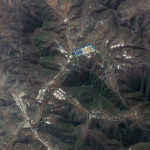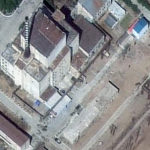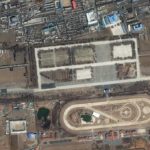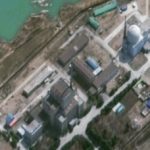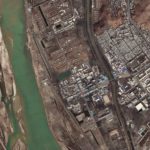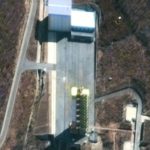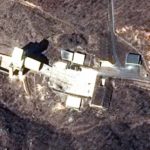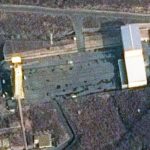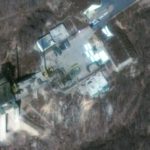May 9, 2019, by Joseph S. Bermudez Jr. and Victor Cha—
Located 150 kilometers north of the DMZ, North Korea's Yusang-ni missile operating base is one of the more recently constructed Strategic Force missile operating bases. There has been almost no open source information about this base until this study.
April 18, 2019, by Joseph S. Bermudez Jr. and Victor Cha—
April 15 railcar movement observed in Airbus satellite imagery at North Korea's Yongbyon facility provides no further understanding concerning the presence of these specialized railcars other that their probable use for the movement of radioactive material.
April 16, 2019, by Joseph S. Bermudez Jr. and Victor Cha—
DigitalGlobe satellite imagery of North Korea’s Yongbyon Nuclear Research Facility acquired on April 12th shows the presence of five specialized railcars near the Uranium Enrichment Facility and the Radiochemistry Laboratory.
In the past these specialized railcars appear to have been associated with the movement of radioactive material or reprocessing campaigns.
April 10, 2019, by Joseph S. Bermudez Jr. and Victor Cha—
On the eve of President Trump’s summit with ROK president Moon Jae-in, commercial satellite imagery acquired on April 7 shows that, although not conclusive, North Korea may be preparing for a parade to honor Kim Il-sung’s birthday (April 15) or KPA Foundation Day (April 25).
April 1, 2019, by Joseph S. Bermudez Jr. and Victor Cha—
Commercial satellite imagery of North Korea’s Yongbyon Nuclear Research Facility acquired on March 28th shows normal operations with a low-level of activity throughout the facility... Beyond Parallel datasets have found that North Korea will engage in provocative acts on average…
March 25, 2019, by Joseph S. Bermudez Jr. and Victor Cha—
Satellite imagery acquired on March 21, 2019 and over the past six months indicates that the No. 17 Explosives Factory near Hamhung is active. While no significant changes have occurred with its infrastructure during this period, the factory was expanded during 2012 with the construction of a large mixing/casting facility capable of producing large solid-propellant rocket motors for ballistic missiles.
March 19, 2019, by Joseph S. Bermudez Jr. and Victor Cha—
While recent activity at the Sohae Launch facility appears to have returned it to operational status after DPRK dismantlement measures earlier in the summer, there has been no activity of significance at the vertical engine test stand or launch pad since early March.
March 9, 2019, by Joseph S. Bermudez Jr. and Victor Cha—
Commercial satellite imagery acquired on both March 6 and March 8, 2019, shows that North Korea has continued preparations on the launch pad and the vertical engine test stand at the Sohae Launch Facility. Based on past practices, these activities could be consistent with preparations for the delivery of a rocket to the launch pad or engine to the test stand; or, they could be North Korean coercive bargaining tactics after the failed Hanoi summit.
March 7, 2019, by Joseph S. Bermudez Jr. and Victor Cha—
Commercial satellite imagery acquired March 6, 2019—four days after the previous image—shows that North Korea has essentially completed the rebuilding of both the rail-mounted transfer transfer/processing structure on the launch pad and the vertical engine at the Sohae Launch Facility.
March 5, 2019, by Joseph S. Bermudez Jr. and Victor Cha—
Commercial satellite imagery acquired on March 2, 2019, shows that North Korea is pursuing a rapid rebuilding of Sohae (Tongchang-ri) Launch Facility at both the vertical engine test stand and the launch pad’s rail-mounted rocket transfer structure.
